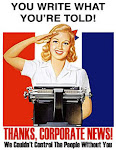DEAN BAKER, TRUTH OUT - Few people would pay $800 to see a movie (even a
good one) or $500 for a beer. Regardless of how much we like movies and
beer, these are steep prices.
When it comes to government social programs like Head Start and
Temporary Assistance to Needy Families, the government's main welfare
program, people also care about the price tag. Unfortunately, the
proponents of these programs never give a price tag, or at least they
don't give one that the public can understand. As a result, many voters
are resistant to spending on these programs, because conservatives tell
them that they cost too much.
The reality is that the price tag for most anti-poverty programs is
quite small relative to the total federal budget. For example, Head
Start accounts for approximately 0.2 percent of the federal budget, or
20 cents of every $100 of spending. Less than 60 cents of every hundred
dollars of federal spending goes to TANF. The appropriations for child
care subsidies, assistance for the homeless, and the nutrition programs
for young children are considerably smaller.
Yet most people believe that these anti-poverty programs take up a large
share of the budget. When the question is asked on opinion polls, people
regularly cite welfare as one of the largest items in the federal
budget. . .
If people believe that we are already spending vast sums on welfare-type
programs, they are quite reasonably reluctant to spend more. After all,
if we are spending a huge amount of money on anti-poverty programs
already, and so many people are still in poverty, why would we think
that spending even more money would make any difference? Also, if people
think that a large portion of the budget is going to anti-poverty
programs, then they may think that increasing the size of these programs
will mean a big tax hit - or conversely, that cutting these programs
would allow for large tax cuts. For these reasons, it is important that
the public have some knowledge of the true size of these programs if
they are to gain more popular support.
The route to increasing public knowledge is not difficult, it is only
necessary to change the way that budget items are reported in the media.
If the media started reporting budget numbers in context (e.g. that the
appropriation for TANF is 0.6 percent of projected federal spending)
then the public would be far more knowledgeable about the true
importance of these programs to the budget and their tax bill.
This is in fact a very winnable goal. Most serious reporters recognize
that numbers in the billions or tens of billions are completely
meaningless to virtually all of their readers. (I know this firsthand
from having argued with them about the issue for many years.) Dan
Okrent, the first public editor at the New York Times, actually made
exactly this point in one of his columns.
http://www.truthout.org/docs_2006/070506J.shtml
Subscribe to:
Post Comments (Atom)




























2 comments:
I only have a few minutes between classes, but this is something that I have raged about for years - and when I have time later, this post will definitely be linked.
And your timing is simply sublime! The tenth anniversary of welfare reform! (How long did you sit on this post waiting for today?)
Coincidentally, I recall Larry Niven making a case for the acronym TANSTAAFL ( There Ain't No Such Thing As A Free Lunch ).
It seemed similar but maybe that's a stretch. Anyway, you wouldn't find anyone making that case re: corporate America's turn at the trough.
Post a Comment